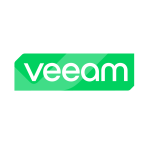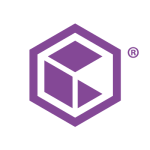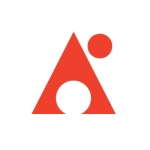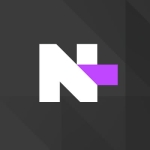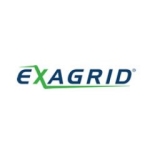Its big data and archive data features are the features that I have found most valuable. I can use it in a big virtual environment.
My company is enterprise and our customers are also enterprise. We have an enterprise business. All of the customers are familiar with Veeam and most of them may be working keyless and without a license or maybe they are using a cracked license or something like that, either way, it is not a good choice if you want a strong solution with strong support. That is why an am focusing them on Cohesity as solution number one. I have experience with Meet Backup, Data Protector Micro Focus, Veeam, and Commvault. I see most of our customers' needs can be covered with Cohesity.
In terms what could be improved, everything is okay. Even the support is very good. In fact, days from now we should receive a big project as an installation with a centralized data solution and more than 30 branches using the virtual appliance.
As for what I would like to see in the next release, we still have not implemented the backup to tape with Cohesity with Exec-U-Store, an additional third-party integration with Cohesity. The demand in our region is for the offsite backup not to be on a cloud or in second site. There is a policy to have the offsite backup using a tape library. Most of the customers had the tape library with an FC, fiber connection. Our customer is looking to have their library connected directly to the Cohesive and to even set up their library to another server with an FC connection, and the Cohesity will see the connected server to the library as a media server or a proxy server.
But I'm not sure about this because our customer is a banking system and the solution for the backup disk needs fast restore, deduplication, etc... But in case of disaster, the server will backup to tape even if you have a backup to cloud. But because you have security regulations for the banking system, it is better to have offsite backup using the tape. Because I didn't work too much on this feature, it is complex for me to use this feature like in other solutions.
Cohesity works like a multitenancy. You can have a customer and you can sell the backup as a service. But in case we need to have backup to tape, we need a special license for the cluster and the integration and things like that.
I'm looking for advanced courses for us as a partner, not as a sales or even technical team, to have a good market for this product. Because, as we are a partner with HPE, we bought the Cohesity solution from one of our customers that dealth with HPE three years. This is a big customer now for Cohesity. They heard about the solution before us and before HPE in our region. One of their IT managers said HPE announced that there is a partnership with Cohesity and it is a good solution. Still, the Cohesity license cost is something. You have costs.
I already went back to my manager and told him that our big customer is looking for Cohesity, and they also checked with HPE, and said, that we did a big launch and a big party for this partnership. Today, most of our banking customers now have Cohesity as their solution. But we need to share this experience with other customers. Maybe our small customers are limited with the needed tera. Some customers need only 10 tera. Cohesity offers the virtual appliance. Some of the customers are using legacy, with apps like StoreOnce or Exadata, ExaGrid, or Data Domain to have this backup in case of a disaster in the data center. I can connect it to any site and restore what I need out of the data center. Today, with virtual appliances, the customer can run it over his virtual production environment.
The limitation that I see in Cohesity is that the minimum sized node is 36 terabytes, which is more than a small customer needs. Because of that, they go directly with a Veeam subscription, or VM or Commvault VM. In this case, you will lose because the customer's target does not fit with what Cohesity is offering. Plus, the price of the physical node with the software as data protection is not like a Veeam subscription, their VM or their socket. This is something for Cohesity to think about - having such a solution but for small business needs. This is my perspective and is what I'm facing when I try to ask the customer go with Cohesity, then I have only 10 to 15 VPN. If they go with Veeam, for example, they can pay for a $1,500 subscription per year.
To achieve the maximum performance using Cohesity, you need to pay more. I did a POC on Cohesity using a virtual appliance and using a customized server which fully assisted me and the performance and also the deduplication, and the other features of Cohesity are not like what you got when you run it over a Cohesity appliance. So if I need to offer my customers a virtual appliance, the performance will not be real like what you get in a physical appliance. This is also a limitation of the virtual appliance. I cannot commit the customer to take the virtual appliance because you will get the same value that is matching what I show you in the physical Cohesity deployment. This is something that is not helpful.
I have been using Cohesity Imanis Data since 2019. We have a partnership with Cohesity.
Cohesive Imanis Data is scalable. I have many big customers that buy it from us with three nodes and it is easy to scale up to four because it is used like hyper-converged hardware.
The initial setup is not complex.
The price should be lower because the solution is very competitive, but the price is too high in comparison with other solutions.
Our customer is focusing on protection, not only Imanis. The Imanis Data is optional for most of them.
Because Cohesity is running with many vendors like HPE, Cisco, and EMC, when you go with the installation, you will find the latest release on the download link. By default, the customer chooses the available one, not the archive one, because it's the only one available. For the person to install it, you should check with Cohesity or the support vendor if this hardware is compatible or not. We have found some issues with the NVMe disk which affects the installation because they like internal scripting and checking the hardware and if some of the disk is not installed or the NVMe disk is not matching the installation script, the OS will not be installed.
On a scale of one to ten, I would give Imanis Data a 10 out of 10.



